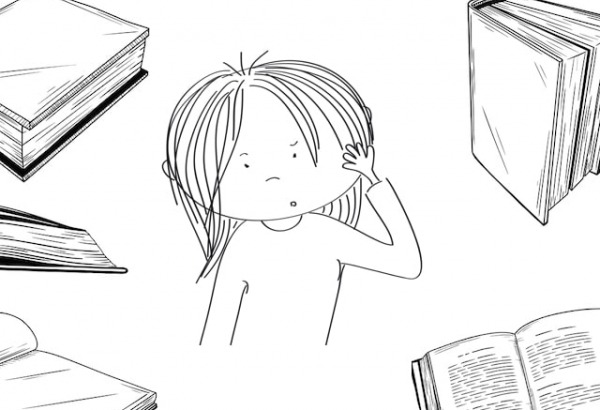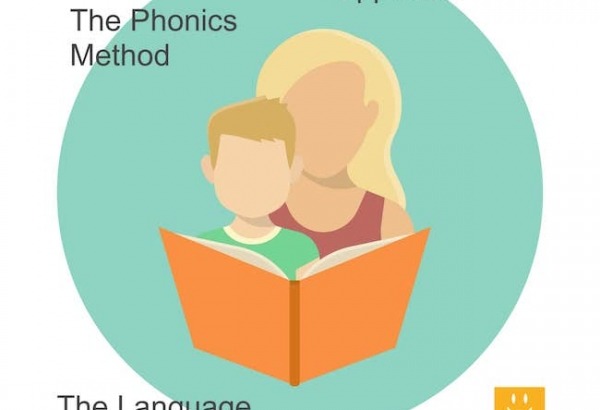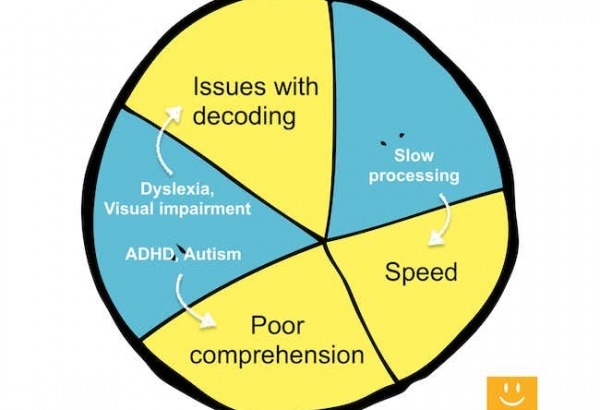10 Fluency strategies for struggling readers

Literacy skills are one of the most important areas of ability children develop in their first few years at school. That's why it's crucial to provide fluency strategies for struggling readers as soon as a learning difficulty is picked up.
Most children begin by sounding out words and learning to recognize common vocabulary from books and classroom materials. With sight reading and more spelling practice comes greater fluency. Reading then speeds up and comprehension of more complex texts becomes possible as vocabulary knowledge grows exponentially. However, not all students find learning to read such an easy process. Struggling readers can quickly fall behind their peers and may develop low self-esteem and a lack of confidence as a result.
Because reading ability affects performance across all areas of the curriculum, including writing skills, it’s important to provide adequate strategy training as early as possible. Ideally remediation is tailored to the individual student’s needs, particularly when a learning difficulty is involved.
Dyslexia and reading
Different learning difficulties affect fluency in different ways but one of the most common conditions implicated in reading problems is dyslexia. If a student has poor reading skills and a somewhat inconsistent approach to spelling –they recognize or produce a word correctly one day but not the next-- dyslexia may be involved.
There are different signs but around 70% of students with dyslexia struggle to split words into their component sounds. It is this lack of phonemic awareness that prevents accurate sound-letter mapping, which is required for spelling and decoding in early reading. A focus on phonics can help students with dyslexia. Another way to help is by taking a multi-sensory approach to teaching reading and spelling – learn more in this article on Orton-Gillingham based reading instruction.
Attention difficulties, slow processing and autism
Some kids have trouble focusing their attention on the books or classroom worksheets they are meant to be reading. For students with attention difficulties, including attention deficit disorder with and without hyperactivity, the challenge is not so much in sounding out the words but concentrating long enough to process what they are reading.
Sitting still and controlling impulsive tendencies can also be problematic, particularly for students with ADHD. What’s crucial is that teachers recognize the root of the problem early on and find strategies to help enhance learning and focus during reading sessions. One idea is choosing a regular time of day when the student is most calm, possibly after an outside exercise break. It’s also a good idea to reduce distractions and create a quiet space where they can go to read on their own.
Parents and teachers may observe reading fluency is lacking in individuals with slow processing. This is because the brain requires more time to carry out the complex cognitive processes involved in reading, from word recognition to comprehension.
Patience, time and more time may be the solution here. In some instances, a student can appear to read fluently but not actually understand what he or she is reading. This is often true for students with autism spectrum disorder—learn more in this article on reading comprehension and autism. For information on addressing fluency issues for students with visual impairments, try this article.

Pre-literacy skills
It’s extremely important and beneficial for children to read with their parents. Even 1 year-olds can enhance their vocabulary and learn more about the world as they point to objects and characters they recognize. Reading with adults helps kids understand how books work. They participate by choosing their favorite stories and turning the pages as their parents read aloud.
Ample exposure to print also gets children ready to learn the alphabet. Silly songs such as "Old McDonald Had a Farm" are used to enhance phonemic awareness and help kids develop their control over stress, rhyme and rhythm in language. Discussing their day and reciting sequences of events is a precursor for understanding how narrative works.
Learn more in 6 pre-literacy skills parents can encourage.

Decoding & comprehension
Reading is a complex cognitive task that involves parallel activity in different areas of the brain. Readers must decode the letters on a page, recognize the words they are made up of and make meaning out of groups of words, sentences and paragraphs. Issues concerning reading fluency can stem from decoding skills, comprehension skills or both. Learn more in this article on common reading problems.
Decoding
This is the process of recognizing letters and words and sounding them out. Decoding is easier said than done in English, a language in which multiple letters can be used to represent the same sounds. The only way to effectively learn how to pronounce common vowel and consonant clusters is to have seen them before. This is one reason why learning to touch-type and drilling letter combinations on a keyboard helps struggling readers. This is especially true if audio recordings of the words are played at the same time.
Comprehension
Fluency can also be affected by a failure to understand what is being read. Readers are required to hold a number of details and contextual clues in memory in order to make connections and pick up on gist, inference and main ideas in the text. If comprehension is a struggle, it can interrupt fluency as students find they cannot follow what they are reading and need to go back to re-read earlier parts of the text. In the same way, focusing too much on decoding can prevent struggling readers from paying attention to the content of a reading.
10 Strategies for fluency
-
Record students reading aloud on their own. If certain sound-letter combinations or words are causing problems, teachers will benefit from listening to the child read out loud. However, this activity can be extremely stressful in front of a classroom of kids, particularly for a student who struggles with fluency. It is best to avoid calling on struggling readers during group reading and instead have them work through a paragraph on their own. Make a recording that can be analyzed later on by a teacher or tutor in order to provide targeted help.
-
Ask kids to use a ruler or a reading window to follow along. Decoding is easier when students don’t lose their place as they move across a page. It’s up to the individual student how they go about this. Some may want to use a pen or pencil, others a piece of paper or a ruler that they move to help them stay focused on the sentence in front of them. A reading window is a useful tool which blocks off the text before and after the sentence the student is reading. Moving something along the page is also a good strategy for readers with ADHD because it involves a kinesthetic element.
-
Have them read the same thing several times. When you’re trying to improve fluency, it helps to see the same text multiple times. Each reading becomes easier and motivation goes up as students experience enhanced fluency thanks to repeat exposure to words and phrases. It can also help when it comes to developing comprehension skills as readers have more opportunities to notice contextual cues.
-
Pre-teach vocabulary. Prime the words a student is going to see in a text and practice reading them in isolation or in phrases. You might do this via an interactive classroom based activity. Get students to use the words and then practice reading them from the board or on a piece of paper. Crossword puzzles can be an effective teaching tool or playing a spelling game. It’s much easier to read a word if it is fresh in memory.
-
Drill sight words. Some words are more common than others and students who have a hard time with fluency will find it is much easier to read when they are familiar with 90% of the vocabulary in a text. Around 50% of all books and classroom based materials for young readers are composed of words from the Dolch List. Learn more in our post on teaching sight words.
-
Make use of a variety of books and materials. If a student has difficulty with reading it can be even more of a struggle to practice with material that is not of interest to them. Sometimes all it takes is getting readers excited about a topic to help them lose themselves in the activity. Try chapter books, comics and poems. Even picture books can work as long as the student doesn’t perceive the material as being below their level. Experiment with texts of different lengths starting with shorter material and gradually working up to longer pieces. TOP TIP: Where fluency is concerned, emphasize the quality of the student’s reading, not the quantity of pages or speed at which they read them.
-
Try different font and text sizes. If there’s a visual impairment that is causing some of the difficulty, reading larger text or text printed on color tinted paper can sometimes make things easier. There are specific fonts which are more appropriate for anyone with a learning difficulty like dyslexia; they help with discerning letters and decoding language.
-
Create a stress free environment. When students are enjoying a book, anxiety and stress are reduced and fluency is enhanced. It’s also possible to foster a relaxing environment by removing any deadlines, time-limits or assessment related goals and just focusing on classroom reading for reading’s sake.
-
Guide students to help them establish a steady pace. One of the hallmarks of fluent reading is establishing a consistent rhythm and pace that guides students through a text. This doesn’t need to be fast and in the beginning new readers should have the option to start slow and increase their pace as they become more comfortable. Some students will want to have a guide, such as a metronome, which gives them a rhythm they can match. Others will find this strategy stressful. Playing music in the background might also work – or not!
-
Introduce a typing course. If a student continues to struggle with fluency, teachers, tutors and parents may consider introducing an extra-curricular program designed to enhance literacy skills. A multi-sensory course like Touch-type Read and Spell can be used at home and in school to learn typing and enhance spelling and sight reading at the same time. An audio component accompanies letters on the screen while students type the corresponding keys. Automated feedback and coursework is divided into discrete modules and independent lessons foster self-directed learning and enhance motivation and self-efficacy in new readers.

Offering encouragement and support
Reading and writing are essential skills and when fluency does not come naturally, strategy instruction based around the individual student’s needs is crucial to help new readers gain the confidence they need to be successful at school.
Regardless of the intervention, progress takes time to achieve. That’s why it is a good idea to schedule a plan of action and set attainable goals for improving fluency in the long-run.
Parents may consider hiring a private tutor – learn more about how to choose a tutor – and teachers can adjust classroom practices to create a less stressful environment in which children can hone their skills.
Above all, students need to be made aware that neurodiversity, specifically learning and attention difficulties, and reading ability have nothing to do with intelligence; help learners understand that effort is more important than results. This will encourage a healthy self-image and help them maintain the motivation required to improve their skills.
Read more about encouraging children with learning difficulties, or try our tips for motivating students to read.
For learners who struggle with reading
TTRS is a phonics-based touch-typing program that strengthens decoding and sight reading skills for children and adults who struggle with reading.
Chris Freeman
TTRS has a solution for you
An award-winning, multi-sensory course that teaches typing, reading and spelling

How does TTRS work?
Developed in line with language and education research
Teaches typing using a multi-sensory approach
The course is modular in design and easy to navigate
Includes school and personal interest subjects
Positive feedback and positive reinforcement
Reporting features help you monitor usage and progress














